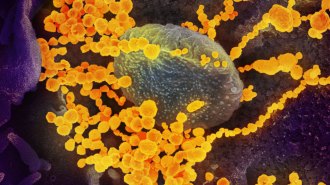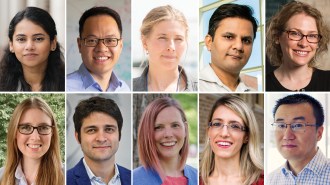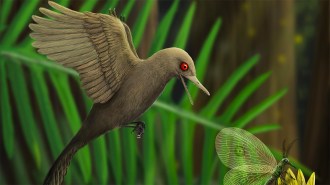Search Results
- Exercise type:Activity
- Topic:Science & Society
- Category:Research & Design
- Category:Diversity in STEM
Diversity in science
Students will explore diversity in the STEM community and discuss how future textbooks might highlight the scientific contributions of the women who won the 2020 Nobel Prize in chemistry. Students also will research and present on the achievements of women in STEM throughout history.

- Educator Guide:Educator Guide
- Topic:Science & Society
- Category:Literacy Practices
- Category:Coronavirus
2020 Year in Review
This guide asks students to reflect on the scientific highs and lows of the last year as reported by Science News. Students will analyze summaries of awe-inspiring discoveries and reflect on the COVID-19 pandemic, including their lingering questions, personal experiences and hopes for the future.
Pandemic reflection
Students will review a timeline of major events related to the COVID-19 pandemic and discuss lingering questions about the pandemic. With a partner, students will reflect on how the pandemic has affected their life and what changes the near future may bring.
- Exercise type:Activity
- Topic:Science & Society
- Category:Research & Design
- Category:Diversity in STEM
How bias affects scientific research
Students will study types of bias in scientific research and in applications of science and engineering, and will identify the effects of bias on research conclusions and on society. Then, students will discuss how biases can be eliminated — or at least recognized and addressed — and develop bias prevention guidelines of their own.

The SN 10: Scientists to Watch
In this guide, students will learn about 10 early- and mid-career scientists, analyze the scientists’ pathways to STEM success and reflect on their own journeys.
Forging paths to STEM success
Students will explore careers in STEM by analyzing and comparing a profile of an SN 10 scientist with that of a scientist highlighted in the Science News for Students “Cool Jobs” collection. Students will think about how the profiles cover the scientists’ personal histories, research and other factors that led the scientists to successful careers in STEM. Then students will reflect on their own STEM goals and possible journey.
Get to know the SN 10
Students will answer questions about a scientist featured on Science News’ SN 10: Scientists to Watch list, which explores the work of 10 early- and mid-career researchers who are tackling some of science’s biggest questions.
The science of locust swarms
Students will answer questions about the online Science News article “A single molecule may entice normally solitary locusts to form massive swarms,” which describes a compound used in locust congregation that might also be used to control the pests. A version of the story, “Chemical coaxes locusts to swarm,” can be found in the September 12, 2020 issue of Science News.
Visual models for how a virus spreads
Students will analyze visual displays of data about clusters of coronavirus cases and work in groups to develop their own visual model of virus spread. Then, students will discuss how the way data are displayed affect data interpretation, and how the displays might inform public health decisions.
Starting small to curb climate change
When it comes to fighting global warming, it’s hard to know where to start. How can individuals make meaningful contributions to this effort? This activity, designed for in-class or at-home learning, encourages students to find ways they can reduce their own carbon footprints, as well as help others work toward the same goal.

A Tiny Dino and Iron Rain
In this guide, students will learn about the smallest-known Mesozoic dinosaur and use phase diagrams to explore meteorology on an exoplanet. In an activity, students will collect and analyze data in their own homes. Editor’s Note: A study included in this guide has been retracted. Please see the comprehension questions for more detail.
The home as laboratory
Science isn’t done just in a laboratory. Observing phenomena and collecting data in the real world are key parts of the scientific effort. This activity, designed for at-home learning, encourages students to collect and analyze data in their own homes to develop a research question for future exploration.